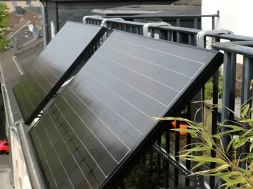
Zero indexation tariffs have been the norm in India for many years, co-authors CEEW-CEF Adviser Gagan Sidhu and IEEFA Research Analyst Kashish Shah said in the study
New Delhi: Indexed (inflation linked) renewable energy tariffs can save India’s discoms up to Rs 21,880 crore over the next five years, a joint study by IEEFA and CEF said.
Inflation indexation of tariffs for future solar capacity could provide much-needed financial respite to the distressed power distribution sector and help India move away from coal-fired power, a joint briefing note by the Institute for Energy Economics and Financial Analysis (IEEFA) and CEEW-Centre for Energy Finance (CEF) said.
Zero indexation tariffs have been the norm in India for many years, co-authors CEEW-CEF Adviser Gagan Sidhu and IEEFA Research Analyst Kashish Shah said in the study.
Indian solar power tariffs hit a record low of Rs 2.36 per unit in June 2020, with zero inflation indexation for 25 years.
However, state-owned power distribution companies (discoms) have not been able to take full advantage of new cheaper renewable energy due to two-part thermal contracts which command a fixed capacity charge even if no power is drawn, the study said.
The study proposed that solar tariffs start at a very low Rs 2.00/kWh for the first year of the 25-year PPA (power purchase agreement), rising at an indexed rate of 2.2 per cent of annual inflation for 15 years and then at a flat rate of 0 per cent for the remaining life of the contract.
The discoms face the twin challenges of a decline in electricity demand, exacerbated by the COVID-19 crisis, and expensive and under-utilised legacy thermal power contracts at a time when ambitious growth in new renewable energy capacity is being targeted, Sidhu said.
“Our modelling shows that the discoms could save up to Rs 21,880 crore (USD 3 bn) over the next five-year period under a partially indexed tariff structure, even with ongoing deflation of solar tariffs. This is compared with cash outflows resulting from incremental renewable capacity auctioned under a flat tariff regime,” Sidhu added.
“We assumed that flat solar tariffs would decline at just 2.5 per cent year over year for the next five years, reaching Rs 2.13/kWh by 2025/26,” Sidhu said.
This is an interim solution to ease the unsustainable near-term financial pressure on discoms, the study said.
The pandemic has compounded the discoms’ long-standing structural and financial issues, and lower renewable tariffs achieved through indexation would give them vital breathing room to implement more durable and lasting reforms, it added.















